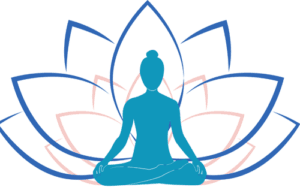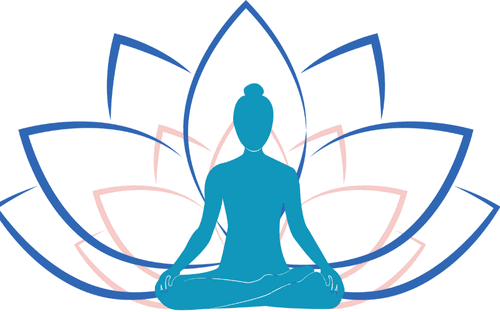Introduction to Self-Love and Confidence in Yoga
Self-love and confidence are essential components of personal growth and emotional well-being. In the realm of yoga, these themes take on a transformative role, enabling practitioners to foster a deeper connection with themselves. Through the practice of yoga, individuals can cultivate a mindset that nurtures self-acceptance and empowers them to embrace their authentic selves. This journey often begins on the mat, where physical postures facilitate not only bodily strength and flexibility but also emotional resilience and self-awareness.
Yoga serves as a potent tool for enhancing self-esteem by encouraging individuals to confront and embrace their vulnerabilities. As practitioners engage in various poses, they learn to listen to their bodies and honor their limits. This process of self-discovery inherently cultivates a sense of worthiness and self-respect. Specifically, poses that open the heart space, such as Camel Pose (Ustrasana) or Cobra Pose (Bhujangasana), are particularly effective in promoting feelings of love for oneself. The act of lifting the chest and opening the shoulders can symbolize the release of emotional barriers, allowing for a more profound sense of acceptance and compassion.
Moreover, yoga assists in the establishment of good posture, which is vital for both physical and mental confidence. Aligning the body correctly can impact how one feels and presents themselves to the world. When the body is aligned, so too can the mind become aligned with more positive thoughts. Each session on the mat not only strengthens the body but also cultivates a mindset that appreciates personal growth and progress. This holistic approach serves to enhance self-love and build a strong foundation of confidence, equipping individuals to navigate life’s challenges with grace and poise.
30-Minute Yoga Class Structure
Creating a well-structured 30-minute yoga session is key to fostering self-love and building confidence. This practice will engage participants both physically and mentally, allowing them to connect with their inner selves and enhance their self-esteem. The session will begin with an opening meditation that lasts for five minutes, where individuals will be encouraged to set their intentions for the practice. This mindful beginning establishes a positive atmosphere and encourages self-reflection.
Following the meditation, a five-minute warm-up will activate the body gently, preparing for deeper movements. This warm-up may include gentle neck rolls, shoulder shrugs, and side stretches to ensure participants are fully engaged and present, cultivating a sense of readiness to embrace the session’s focus. After this, participants will transition into a sequence of empowering poses, lasting approximately fifteen minutes. Chest-opening poses, such as Cobra Pose (Bhujangasana) and Bridge Pose (Setu Bandhasana), are particularly beneficial in promoting self-acceptance and inviting vulnerability. Each pose will be held for several breaths, allowing for a deeper connection with oneself and fostering confidence through body awareness.
As the session progresses, a few minutes will be dedicated to moments of mindfulness and breath awareness between poses. These intervals are essential, as they provide the opportunity to integrate the physical benefits of the poses with mental clarity, reinforcing the practice’s emotional aspects. The class will conclude with a calming five-minute cool-down that encourages relaxation and reflection on the practice’s focus on self-love and self-acceptance. By structuring the class in this manner, participants are guided through a holistic experience that aims to empower them both on and off the mat.
Incorporating Guided Affirmations and Breathwork
Integrating guided affirmations and breathwork into a yoga practice can significantly enhance the experience, fostering a deeper connection to self-love and confidence. As participants flow through poses, placing emphasis on affirmations allows them to cultivate empowerment. For instance, as one transitions into Warrior II, they might repeat affirmations such as, “I am strong and capable,” or “I embrace my unique beauty.” Such statements, when spoken aloud or internally, serve not merely as words but as a reaffirmation of one’s inherent worth.
Similarly, in poses like Child’s Pose, participants can use calming affirmations such as, “I am safe and supported,” promoting feelings of trust and relaxation. This powerful combination aids in aligning both body and mind, creating an atmosphere conducive to self-acceptance and personal growth. Encouraging individuals to take time to breathe deeply while affirming can amplify the impact, as this practice builds confidence from within.
Breathwork is essential in this integration, as it enhances emotional regulation and supports physical postures. Techniques such as deep diaphragmatic breathing help participants connect with their inner strength. Inhale deeply through the nose, filling the diaphragm, and allow the abdomen to expand, followed by a slow exhale through the mouth. This method activates the parasympathetic nervous system, which promotes relaxation and a calm mindset, enabling a space for positive affirmations to resonate.
To weave these elements seamlessly into the class, instructors might start with a brief introduction to affirmations and their benefits, followed by guiding participants through structured breathwork exercises. Throughout the practice, it is beneficial to remind individuals to combine their breath with their affirmations. This approach not only enhances focus but also solidifies the connection between mind and body, thereby fostering a profound sense of self-love and confidence.
Building Body Awareness and Self-Compassion
Body awareness is a fundamental aspect of yoga that encourages individuals to connect with their physical sensations, emotions, and thoughts during their practice. It is essential for participants to listen to their bodies, recognizing the signals they receive as they move through various poses. By fostering this connection, one cultivates a deeper understanding of personal limits, abilities, and needs. In yoga, each posture provides an opportunity for introspection, allowing practitioners to tune into how their bodies respond to different movements and the emotions that arise in the process.
Honoring one’s physical boundaries is crucial in this journey towards self-love and confidence. Participants are encouraged to modify poses or take breaks as needed, advocating for their comfort and well-being rather than striving for perfection. This approach cultivates an environment where self-compassion thrives, and individuals can accept their current state without harsh judgment. Learning to appreciate one’s efforts, regardless of the outcome, nurtures a supportive internal dialogue and fosters resilience.
Self-compassion in yoga practice can be cultivated through mindful breathing, intention setting, and positive affirmations. Participants are encouraged to breathe deeply and focus on their inhales and exhales, allowing them to center themselves and create a sense of calm. Setting specific intentions for the practice can help participants remain focused on their personal growth, enhancing their sense of self-awareness. Affirmations can further reinforce these concepts; phrases such as “I honor my body,” or “I celebrate my journey” can serve as powerful reminders of the importance of self-acceptance.
In conclusion, body awareness and self-compassion are integral components of an empowering yoga practice. Regular engagement in these principles not only enhances the yoga experience but also contributes significantly to the development of lasting self-love and confidence. By embracing one’s body and celebrating individuality, the transformative power of yoga becomes increasingly accessible.



